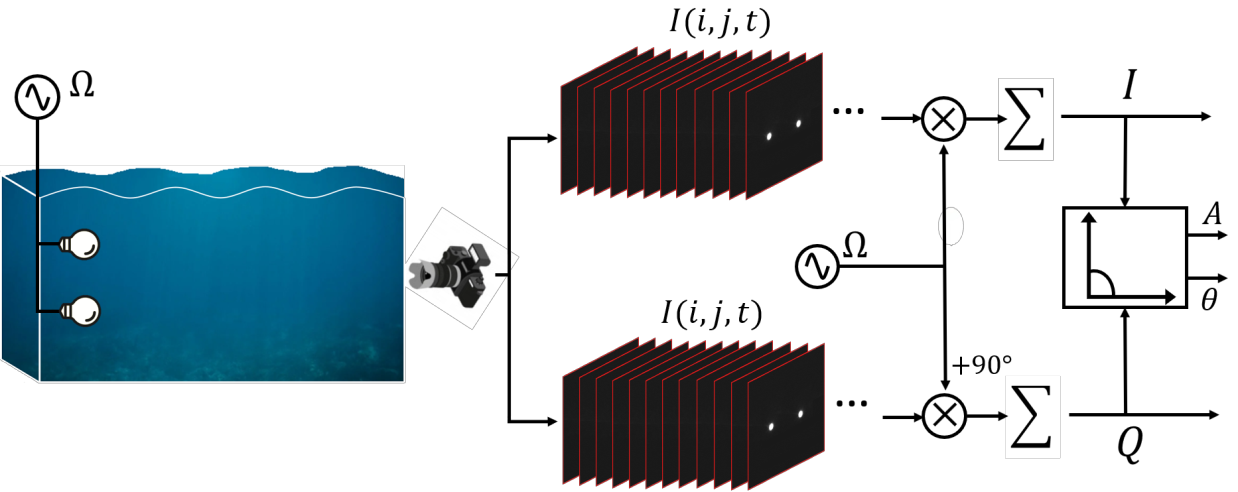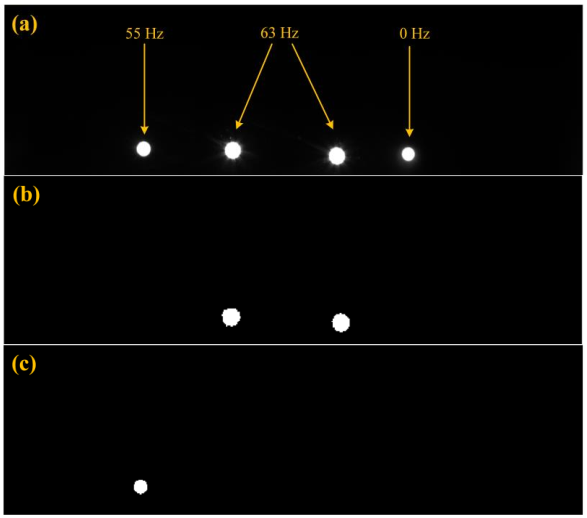Abstract
Understanding the marine environment is crucial for a variety of underwater missions, such as resource detection and underwater structure inspection. These tasks are unable to be carried out without the intervention of autonomous underwater vehicles (AUVs). The use of autonomous underwater vehicles (AUVs), to potentially carry out underwater exploration missions, is limited
due to insufficient onboard battery and data storage capacity. To overcome this problem, underwater docking stations are used to provide the facility of underwater charging and data transfer for AUVs. These docking stations are designed to be installed in the dynamic ocean environment, where the turbidity and low-light conditions are key challenges to hinder the
successful docking operation. The vision guidance algorithms based on active or passive markers are typically used to precisely guide the AUV towards the docking station. In this paper, we propose a vision-based guidance method, using lock-in detection, to mitigate the effect of turbidity, and to reject the unwanted light sources or noisy luminaries, simultaneously. The lock-in detection method locks on the blinking frequency of light beacons located at the docking
station and successfully vanishes the effect of unwanted light at other frequencies. The proposed method uses two light beacons, emitting at a fixed frequency, installed at the simulated docking station and a single sCMOS camera. Proof-ofthe-concept experiments are performed to show the validity of the proposed approach. The obtained results show that our method is capable of recognizing the light beacons at different turbidity levels, and it can efficiently reject the unwanted
light without using separate image processing for this step of the vision-based guidance algorithm. The effectiveness of the proposed method is validated by calculating the true positive rate of the detection method at each turbidity level.

Fig. Principle of lock-in detection.

Fig. a) Raw camera frame captured in clear water with the active light beacons, modulated at 63 Hz, installed on the simulated docking station in the center, and two background light sources emitting at 55 Hz and 0 Hz. b) The binarized result after lock-in detection is applied at 63 Hz. c) The binarized result after lock-in detection is applied at 55 Hz.
Analysis of imaging technology
Vsion-based navigation is aided by optical sensors, which is found to outperform others in terms of high-accuracy positioning, low vulnerability to external detection, and capacity for multiple tasks, but suffers from attenuation and scattering of light in an underwater environment.
Furthermore, the turbidity, caused by the mud blown up by the AUV in the deep sea, can make the applicability of visionbased methods even more challenging. The Dhyana 400BSI camera provides the flexibility required for experiments, with high speed and high signal-to-noise ratio, capable of extracting weak signals in noise, and cooperating with software to achieve lock-in time detection on image time series.
Reference source
Amjad R T, Mane M, Amjad A A, et al. Tracking of light beacons in highly turbid water and application to underwater docking[C]//Ocean Sensing and Monitoring XIV. SPIE, 2022, 12118: 90-97.

 22/08/31
22/08/31







